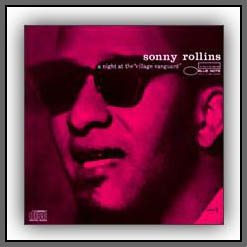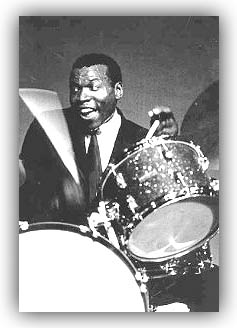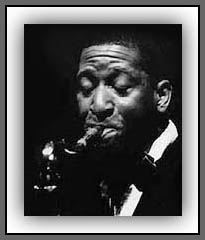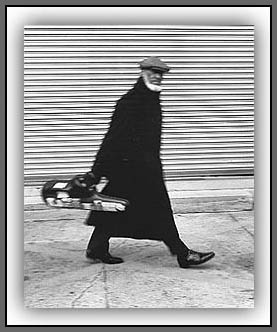

track 1. A Night In Tunisia: track 2. I've Got You Under My Skin:
track 3. A Night In Tunisia: track 4. Softly, As In A Morning Sunrise: track 5. Four: track 6. Woody 'N You: track 7. Old Devil Moon:
track 1. A Night In Tunisia: track 2. I've Got You Under My Skin:
track 3. A Night In Tunisia: track 4. Softly, As In A Morning Sunrise: track 5. Four: track 6. Woody 'N You: track 7. Old Devil Moon:
track 1. A Night In Tunisia: track 2. I've Got You Under My Skin:
track 3. A Night In Tunisia: track 4. Softly, As In A Morning Sunrise: track 5. Four: track 6. Woody 'N You: track 7. Old Devil Moon:
track 1. A Night In Tunisia: track 2. I've Got You Under My Skin:
track 3. A Night In Tunisia: track 4. Softly, As In A Morning Sunrise: track 5. Four: track 6. Woody 'N You: track 7. Old Devil Moon:
track 1. A Night In Tunisia: track 2. I've Got You Under My Skin:
track 3. A Night In Tunisia: track 4. Softly, As In A Morning Sunrise: track 5. Four: track 6. Woody 'N You: track 7. Old Devil Moon:
track 1. A Night In Tunisia: track 2. I've Got You Under My Skin:
track 3. A Night In Tunisia: track 4. Softly, As In A Morning Sunrise: track 5. Four: track 6. Woody 'N You: track 7. Old Devil Moon:
track 1. A Night In Tunisia: track 2. I've Got You Under My Skin:
track 3. A Night In Tunisia: track 4. Softly, As In A Morning Sunrise: track 5. Four: track 6. Woody 'N You: track 7. Old Devil Moon:
|
A Night At The Village Vanguard
Blue Note Records
tenor sax - Sonny Rollins
producer - Alfred Lion | |||
| Leonard Feather's Original 1957 LP Liner Notes... | ||||
| _____This LP constituted a double première. For the first time Sonny Rollins (bio) is heard appearing before the public as leader of his own combo. For the first time the Village Vanguard, one of New York's most proudly prescient night clubs, comes to life through the medium of an in-person recording. _____Neither development will come as much of a surprise to anyone who has followed the career of Sonny Rollins as a sound in modern jazz or the Vanguard as a nursery of rising talent. _____On a recent night, during the Sonny Rollins incumbency at the club, I caught its proprietor, Max Gordon, in a reminiscent mood. _____"...We opened the Vanguard in April 1935...", he said. "...it was originally one of those real Bohemian hangouts. _____"...Those Monday night jam sessions - boy! did we have some stars! Nat "King" Cole, Earl Hines, Benny Morton, Vic Dickenson, anyone you can name. I ran into Dizzy Gillespie last summer at Newport and he said, 'Man, when I see you, it reminds me how old I am'..." A photograph in the book "Inside Jazz" (formerly known as "Insider Bebop") shows a February 1942 jam session at the Vanguard with Dizzy, Vida Musso, Billy Kyle, Cootie Williams, and Charlie Shavers. _____"...When The Revuers came back the second time...", recalls Max Gordon, "...we had Eddie Heywood playing piano, not long after he had left Benny Carter's band. At one time he worked with a trio, using Albert Nickolas and Zutty Singleton. Then we had Art Hodes's trio and Maxie Kaminsky and all the great blues folk singers like Josh White and Leadbelly...". _____In the late 1940s and the early '50s, jazz generally took a back seat at the Vanguard; except for the Dixie spots, it had moved uptown, first to 52nd Street and then to the Broadway clubs. But in May 1957, Max Gordon decided, in his own words, to "...refresh the whole entertainment setup...". Since last summer he has used a provocative mixture of the greatest in modern jazz, from Chico Hamilton and Stan Getz to J.J. Johnson, interspersed with verbal entertainment by performers who, in one way or another, were hip enough or sufficiently jazz-associated to please the audiences who had come primarily to inspect the music; men like Mort Sahl and Irwin Corey, who, in their respective categories, may well be the two funniest men alive , and Jack Kerouac, whose occasionally jazz-tinted adventures in his novel "On the Road", led to his employment at the Vanguard, reading some of his own writings to a jazz background. _____That Sonny Rollins could fit into such a scene was logical and perhaps inevitable. Max Gordon had been listening to Sonny Rollins on records and then had gone to hear him during Sonny Rollins' tenure with Miles Davis (bio). When Sonny Rollins decided to branch out on his own, he offered him the use of the hall. _____Sonny Rollins spent his weeks at the Vanguard experimenting, toying briefly with the idea of using a quintet. For the first week he had trumpet, piano, bass, drums and himself. The second week he dropped the trumpet and brought in a new rhythm section. Still not feeling that he was getting quite the right presentation, he wound up with the economy-sized combo that turned out to be the most satisfactory to him - the tenor sax / bass / drums trio heard on these sides. _____Sonny Rollins' sidemen on five of these six tracks are both familiar to the followers of recent developments in jazz. Wilbur Ware (bio), _____On "A Night In Tunisia", which was recorded the same evening but with a different personnel, Sonny Rollins used bassist Donald Bailey from Baltimore (not related to Jimmy Smith the drummer) and Pete La Roca on drums. _____From the start it is apparent that Sonny Rollins' motive in whittling down his unit to the compact trio heard here was the concentration of attention on his own personality, an aim well justified by the results when, with no complex arrangements to impede him and nothing but drums driving and bass beating behind him, he tears into four minutes of improvisation on "Old Devil Moon", and only gives up momentarily during a series of four with drummer. For the last minute or two, this track develops into a protracted coda built around the tonic, a device Sonny Rollins employs to dramatic effect. _____Sonny Rollins' own announcement introduces "Softly As In A Morning Sunrise", in which Wilbur's own line behind Sonny Rollins' melody is a feature of the first chorus. Sonny Rollins' horn then grabs the spotlight in a performance that reflects his volatile personality - the flurry of notes at the end of the first eight measures is typical. Wilbur then has a long solo, brilliantly conceived and stupendously recorded (courtesy of Rudy Van Gelder). Elvin Jones maintains the kind of beat one would expect from a member of the Jones family, both in his solo and in his fours with Sonny Rollins, as well as in the trio passages. "Striver's Row", a Sonny Rollins original that closed this side, is a medium-bright performance based on a familiar chord sequence. _____The Second side opens with "Sonnymoon For Two", a simple repeated riff based on the blues, in a descending phrase. The Sonny Rollins horn is in control for a full five minutes, impassioned and inventive, before Wilbur relieves him with a series of fours. _____"A Night In Tunisia", the Dizzy Gillespie composition known in jazz circles for fifteen years, is taken at a faster tempo than usual. Sonny Rollins pulls a surprise by changing the melody of the customary interlude between the first and second chorus, while retaining the original pattern of its chord changes. Later on he blows some phrases from _____"I Can't Get Started" is the only ballad track of the session. The Vernon Duke standard is taken at a slow tempo to which Sonny Rollins applies his forceful tone and individual melodic ideas without destroying the original concept of the tune. _____Blue Note was happy to have the friendly cooperation of Max Gordon and the Vanguard in the making of these sides, just as jazz fans are happy to have the Vanguard as one of New York's foremost havens of contemporary jazz - just as all of us are delighted to see Sonny Rollins launched on the road to what should be a brilliant and successful new phase of his career. ( Leonard Feather - late 1957 ) | ||||
|
| ||||
|
Sonny Rollins: a bio ______Sonny Rollins began his musical studies on piano, studied alto saxophone from about the age of 11, and then took up the tenor saxophone in 1946. In high school he led a group with Jackie McLean, Kenny Drew, and Art Taylor. He rehearsed with Thelonious Monk for several months in 1948, and from 1949 to 1954 recorded intermittently with a number of leading bop musicians and groups, including J. J. Johnson, Charlie Parker, Fats Navarro, Bud Powell, Max Roach, Art Blakey, Monk, and the Modern Jazz Quartet.  His most frequent associate during these early years was Miles Davis, with whom he performed in clubs from 1949 and recorded from 1951. In one of these recording sessions with Davis, in 1954, he introduced three compositions of his own which later became jazz standards: "Airegin", "Doxy", and "Oleo". His most frequent associate during these early years was Miles Davis, with whom he performed in clubs from 1949 and recorded from 1951. In one of these recording sessions with Davis, in 1954, he introduced three compositions of his own which later became jazz standards: "Airegin", "Doxy", and "Oleo"._____In 1955, while overcoming his dependence on drugs, he worked in Chicago and, in December, joined the Clifford Brown - Max Roach Quintet. He remained with Roach until May 1957, then performed briefly in Davis's quintet; thereafter, however, he has led his own groups. In 1956 came the first of a series of landmark recordings issued under Rollins's own name: "Valse Hot" introduced the practice, now common, of playing bop in 3/4 meter; "St. Thomas" initiated his explorations of calypso patterns; and "Blue 7" was hailed by Gunther Schuller as demonstrating a new manner of "thematic improvisation", in which the soloist develops motifs extracted from his theme. "Way Out West" (1957), Rollins's first album using a trio of saxophone, double bass, and drums, offered a solution to his longstanding difficulties with incompatible pianists, and exemplified his witty ability to improvise on hackneyed material ("Wagon Wheels", "I'm an Old Cowhand"). "It Could Happen to You" (also 1957) was the first in a long series of unaccompanied solo recordings, and "The Freedom Suite" (1958) foreshadowed the political stances taken in jazz in the 1960s. _____During the years 1956 to 1958 Rollins was widely regarded as the most talented and innovative tenor saxophonist in jazz. Nevertheless, he was discontented: he could not find compatible sidemen, saw shortcomings in his own playing, and suffered from poor health. For these reasons he voluntarily withdrew from public life from August 1959 to November 1961. During this period of retirement his habit of practicing on the Williamsburg Bridge in New York became legendary. _____On resuming his career Rollins had improved his already prodigious skills, but his style was now considered conservative. In an effort to rejoin the vanguard of jazz fashion he began, in mid-1962, collaborating with Don Cherry, Billy Higgins, and other musicians playing free jazz; "East Broadway Run Down" (1966) illustrates the furthest extent to which he incorporated noise elements into his playing. During these years, as Rollins continued to struggle with changing personnel and instrumentation, he focused increasingly on unaccompanied playing, and by the end of the decade he had become famous for his extended, "stream of consciousness" extemporizations on traditional tunes and on his own calypso songs. _____In 1965 Rollins wrote the film score for "Alfie" (apart from the title song, which is by Burt Bacharach). He pursued spiritual interests in India for five months in 1968, and abandoned music altogether from September 1969 to November 1971. _____Rollins has continued to experiment, recording on soprano saxophone in 1972 and on lyricon in 1979. However, touring the USA in 1978 as a member of the 'Milestone Jazzstars' (with McCoy Tyner, Ron Carter, and Al Foster), he demonstrated that, as an individual, he remained essentially true to the bop tradition, an aspect of his playing that was again especially apparent in an acclaimed solo performance at the Museum of Modern Art in New York in 1985. Except for a six-month hiatus in 1983, after he collapsed from exhaustion, Rollins remained active through the late 1980s, touring the USA, Europe, and Japan, and recording a fusion of bop and soul music with his quintet. | ||||
|
| ||||
|
Wilbur Ware: a bio ______Wilbur Bernard Ware was born in Chicago on September 8th 1923 and died in Philadelphia on September 9th, 1979. Wilbur Ware was one of bop's most advanced and influential bassists and a superb rhythmic anchor with an unerring sense of swing. Where many post-Jimmy Blanton bassists concentrated on legato melodic phrasing, Wilbur Ware wasn't afraid to shift the rhythmic emphasis by varying his note lengths and leaving empty space between his phrases; he also stuck mostly to the lowest register of his instrument, laying a thick foundation.  Even if Wilbur Ware wasn't quite the soloist Jimmy Blanton was, he had an expert understanding of harmony that allowed him to support some of bop's most sophisticated players. Even if Wilbur Ware wasn't quite the soloist Jimmy Blanton was, he had an expert understanding of harmony that allowed him to support some of bop's most sophisticated players._____Wilbur Ware played banjo, drums, and violin before picking up the bass as a teenager. After serving in World War II, Ware hit the Chicago jazz scene in 1946, playing with Roy Eldridge, Sonny Stitt, and Stuff Smith early on, as well as striking up relationships with Johnny Griffin (with whom he recorded in 1954) and Junior Mance. After working with a very early version of Sun Ra's Arkestra, Wilbur Ware joined Art Blakey's band and moved to New York in 1956. _____In 1957, he joined up with Thelonious Monk and played in his legendary groups with John Coltrane; the same year, he also participated in Sonny Rollins' equally legendary "A Night at the Village Vanguard" concerts. In late 1957, Wilbur Ware also recorded his only album as a leader, "Chicago Sound", which featured fellow Chicagoans like Johnny Griffin and Junior Mance, not to mention several Wilbur Ware solos. _____During the late '50s, Wilbur Ware recorded as a sideman on hard bop dates for Riverside® and Blue Note®, but his worsening health (probably exacerbated by drug problems) kept him out of action from 1963-1968. He returned in 1969 and soon played on adventurous sessions with Elvin Jones and Archie Shepp. Wilbur Ware eventually moved to Philadelphia, where he died in 1979. (...from Steve Huey...) | ||||
|
| ||||
|
Elvin Jones: a bio ______Elvin Ray Jones, born in Pontiac (Michigan) on September 9th, 1927, will always be best-known for his association with the classic John Coltrane Quartet (1960-65) but he has also had a notable career as a bandleader and has continued being a major influence during the past 30 years. One of the all-time great drummers (bridging the gap between advanced hard bop and the avant-garde), Elvin Jones is the younger brother of a remarkable musical family that also includes Hank Jones and Thad Jones. After spending time in the Army (1946-49), he was a part of the very fertile Detroit jazz scene of the early '50s.  He moved to New York in 1955, worked with Teddy Charles and The Bud Powell Trio and recorded with Miles Davis and Sonny Rollins (the latter at his famous Village Vanguard session). He moved to New York in 1955, worked with Teddy Charles and The Bud Powell Trio and recorded with Miles Davis and Sonny Rollins (the latter at his famous Village Vanguard session).______After stints with J.J. Johnson (1956-57), Donald Byrd (1958), Tyree Glenn and Harry "Sweets" Edison, Elvin Jones became an important member of John Coltrane's Quartet, pushing the innovative saxophonist to remarkable heights and appearing on most of his best recordings. When John Coltrane added Rashied Ali to his band in late 1965 as second drummer, Elvin Jones was not pleased and he soon departed. He went on a European tour with The Duke Ellington Orchestra and then started leading his own groups which in the 1990s became known as Elvin Jones's Jazz Machine. Among his sidemen have been saxophonists Frank Foster, Joe Farrell, George Coleman, Pepper Adams, Dave Liebman, Pat LaBarbera, Steve Grossman, Andrew White, Ravi Coltrane and Sonny Fortune, trumpeter Nicholas Payton, pianists Dollar Brand and Willie Pickens, keyboardist Jan Hammer and bassists Richard Davis, Jimmy Garrison, Wilbur Little and Gene Perla among others. Elvin Jones has recorded as a leader for many labels including Atlantic®, Riverside®, Impulse®, Blue Note®, Enja®, PM®, Vanguard®, Honey Dew®, Denon®, Storyville®, Evidence® and Landmark®. (...from Scott Yanow...)
|
|
|
OnLinerNotes - JAZZ
| |
 There wasn't much music for the first couple of years - just a piano player. Then came The Revuers in 1938, with Leonard Bernstein at the piano. The Revuers stayed about a year, and after that we had a lot of folk artists and we began to go in for jazz in the early 1940s..."
There wasn't much music for the first couple of years - just a piano player. Then came The Revuers in 1938, with Leonard Bernstein at the piano. The Revuers stayed about a year, and after that we had a lot of folk artists and we began to go in for jazz in the early 1940s..." first heard with Thelonious Monk after he breezed into town from Chicago, has previously been heard on Blue Note with Sonny Clark (1570). Elvin Jones (
first heard with Thelonious Monk after he breezed into town from Chicago, has previously been heard on Blue Note with Sonny Clark (1570). Elvin Jones ( Dizzy's current big band arrangement of the tune. Drummer Pete La Roca, who was discovered at a Jazz Unlimited session in New York, has an impressive solo.
Dizzy's current big band arrangement of the tune. Drummer Pete La Roca, who was discovered at a Jazz Unlimited session in New York, has an impressive solo. From 1972, when he resumed playing once more, he has led various groups of young, lesser-known musicians, performing in a commercial vein and making use of electronic instruments and African-American dance rhythms; a film made the following year, "Sonny Rollins Live", captures the exuberance of a concert performance.
From 1972, when he resumed playing once more, he has led various groups of young, lesser-known musicians, performing in a commercial vein and making use of electronic instruments and African-American dance rhythms; a film made the following year, "Sonny Rollins Live", captures the exuberance of a concert performance.